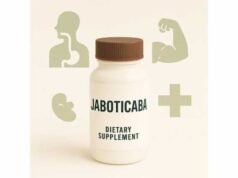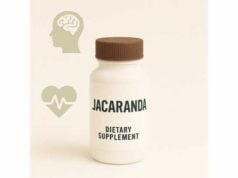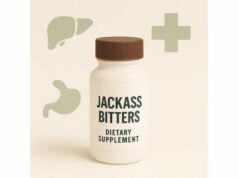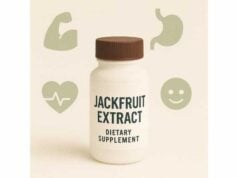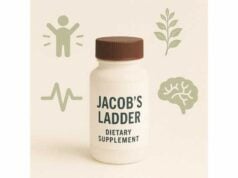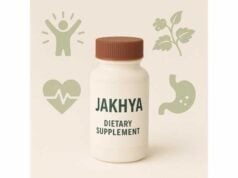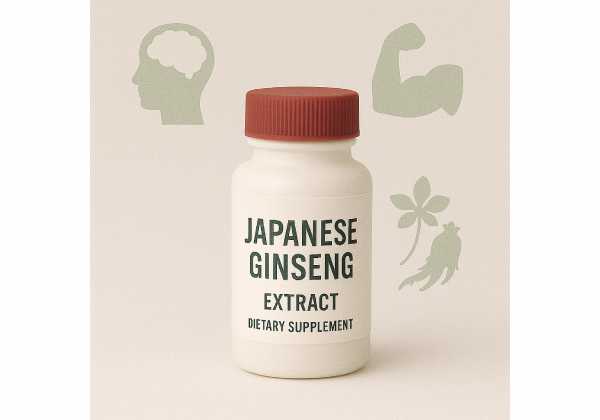
Japanese ginseng—most precisely Panax japonicus (also called Chikusetsu-ninjin)—belongs to the same adaptogenic family as Korean (Panax ginseng) and American ginseng (Panax quinquefolius). While all Panax species contain ginsenosides (triterpene saponins), P. japonicus is notable for its bamboo-like creeping rhizome and a distinctive profile rich in ocotillol-type saponins such as chikusetsusaponin IVa and ginsenoside Ro. In traditional East Asian practice, the rhizome is used as a tonic for recovery, stamina, bleeding control, and inflammatory discomfort. Today, standardized extracts and carefully processed roots are explored for energy and fatigue, exercise recovery, cognitive clarity, metabolic support, and joint comfort, with safety considerations similar to other ginsengs. This guide translates the tradition and modern data into practical decisions: how Japanese ginseng compares with other Panax species, what benefits to expect and when, how to choose forms and doses, who should avoid it, and how to run a simple, safe self-trial that actually yields answers.
Essential Insights
- Japanese ginseng provides adaptogenic support for fatigue, stress resilience, and everyday inflammatory discomfort when used consistently for 4–12 weeks.
- Typical adult ranges: 200–400 mg standardized extract (1–2 times daily) or 1–3 g dried rhizome in decoction; start low and take with food.
- Main cautions mirror other ginsengs: gastrointestinal upset, insomnia, and potential interactions with anticoagulants and glucose-lowering medicines.
- Avoid use during pregnancy and breastfeeding, in children, and before surgery unless a clinician approves.
Table of Contents
- What is Japanese ginseng and how it differs
- Does it work? Benefits you can expect
- How to use: forms and preparations
- How much to take: dosage
- Safety, side effects, and who should avoid it
- Evidence summary and smart product checklist
What is Japanese ginseng and how it differs
Botany and identity. Japanese ginseng refers primarily to Panax japonicus C.A. Meyer, a Panax species native to Japan, China, and Korea. In Japan, it is known as Chikusetsu-ninjin; in Chinese contexts, Zhujieshen—both nicknames for its bamboo-jointed rhizome. Like other Panax plants, the medicinal part is the rhizome/root, harvested and dried. National pharmacopeias list it among official crude drugs, underscoring the need for clear identity and quality control in trade.
How it compares to Korean and American ginseng. All Panax species are rich in ginsenosides, but their profiles differ. Korean and American ginseng are dominated by protopanaxadiol and protopanaxatriol ginsenosides (e.g., Rb1, Rg1), whereas P. japonicus contains higher proportions of oleanane and ocotillol-type saponins such as chikusetsusaponins (e.g., IVa) and ginsenoside Ro. These structural differences contribute to nuanced effects—users often describe Japanese ginseng as steadier and less “stimulating” than some red (steamed) ginsengs, with noticeable digestive and hemostatic traditions.
Key bioactive constituents (plain list):
- Chikusetsusaponin IVa, ginsenoside Ro (oleanane and ocotillol types): investigated for anti-inflammatory, anti-obesity (animal models), and vascular-supportive actions.
- Protopanaxadiol/protopanaxatriol ginsenosides (smaller share): associated with cognitive, fatigue, and immune modulation in Panax species.
- Polysaccharides: linked to immune tone and gut comfort.
- Volatile oils/terpenes: contribute aroma and minor antimicrobial effects.
Mechanisms—what that means in practice.
- Adaptogenic stress response. Panax saponins interact with multiple signaling pathways (HPA axis, AMPK, Nrf2, NO) to steady stress responses rather than forcing a narrow effect.
- Inflammation and oxidative balance. Ocotillol- and oleanane-type saponins can modulate inflammatory mediators and support antioxidant defenses—experienced as easier joints or less “post-workout creakiness.”
- Metabolic edges. Preclinical work suggests support for lipid handling and glucose dynamics, with intestinal mechanisms (e.g., mild inhibition of fat digestion) proposed for certain chikusetsusaponins.
- Hemostatic tradition. Historical use includes bleeding control and wound support; modern users should treat these as heritage signals rather than medical claims.
Bottom line: Japanese ginseng is not a caffeine-like stimulant. It is a tonic herb whose benefits accrue with consistent use, and whose effects depend on species identity, preparation, and dose. If you have experience with Korean or American ginseng and found them edgy or sleep-disturbing, the P. japonicus profile may feel gentler—still active, but smoother.
Does it work? Benefits you can expect
Energy and fatigue resilience. Across Panax research, the best-substantiated everyday outcome is a modest improvement in fatigue and perceived vitality after several weeks of use. Users often report steadier late-afternoon energy and less “wired-tired” contrast. With Japanese ginseng, the experience tends to be calm clarity rather than a pushy lift.
Exercise recovery and physical performance. In Panax trials, benefits cluster around perceived exertion, recovery quality, and soreness rather than raw power spikes. For Japanese ginseng, the anti-inflammatory and antioxidant profile—particularly ocotillol saponins—aligns with smoother recovery when taken daily during training blocks. Expect increments, not miracles.
Joint comfort and everyday aches. A practical use-case for Japanese ginseng is everyday inflammatory discomfort—the nagging stiffness after desk work, the protest from old mileage. When users are consistent (daily dosing with meals), the cumulative effect over 4–8 weeks can feel like easier starts and a shorter “warm-up” arc into pain-free motion.
Cognitive clarity and mood under stress. Panax species have long been explored for attention, processing speed, and working memory under stress or sleep debt conditions. Reports with P. japonicus are similar but subtler, with users noting steadier focus rather than pronounced stimulation. When cognitive benefits appear, they typically do so after 2–4 weeks of a stable regimen.
Metabolic markers. Here, expectations should be measured. Animal work with chikusetsusaponins shows anti-obesity and lipid effects, but human evidence with P. japonicus–specific preparations is preliminary. If metabolic health is a primary goal, think of Japanese ginseng as a supportive adjunct to diet, movement, and sleep—not as a standalone therapy.
Who tends to notice the most?
- Adults with stress-related fatigue and desk-work stiffness who can commit to daily, with-food dosing.
- Recreational athletes seeking recovery smoothness rather than acute ergogenic pops.
- Individuals who found some red ginsengs too stimulating but still want a Panax-tonic effect.
What not to expect. Japanese ginseng is not a sedative, a painkiller, or a cure for chronic disease. Benefits are modest, cumulative, and reversible: stop taking it, and the effect fades over days to weeks.
Signals it might be working for you:
- Less “first-step stiffness” on rising or after long sitting.
- Fewer slumps in the mid-afternoon despite similar workload.
- More predictable recovery between training sessions.
- No sleep disruption (or only early, transient adjustment that settles when dosing is moved earlier in the day).
How to use: forms and preparations
1) Dried rhizome (whole, cut, or powdered) for decoction
- What it is: Sliced or powdered P. japonicus rhizome used as a simmered tea (decoction).
- Basic method (per cup, ~250 mL): Add 1–3 g dried rhizome to 300 mL cool water. Bring to a gentle simmer for 15–20 minutes, covered. Strain, top back to 250 mL, and drink warm with food.
- Cadence: Start 1 cup daily for 3–4 days. If well tolerated, increase to 1–2 cups/day.
- Taste: Earthy, faintly bitter. A thin slice of fresh ginger or a twist of citrus can improve palatability without heavy sweetening.
2) Standardized extract (capsules or tablets)
- What it is: A concentrated extract of the rhizome, often specifying total saponins or particular markers (e.g., chikusetsusaponin IVa, ginsenoside Ro).
- Why use it: Consistency. Extracts reduce batch-to-batch variability and simplify dosing for self-trials.
- How to start: Choose a product that clearly states species (Panax japonicus), plant part (rhizome), and mg per capsule. Begin once daily with food at the low end of the label range; step up after several days if needed.
3) Powders for smoothies or culinary use
- What it is: Finely powdered rhizome used in small culinary amounts (e.g., blended into smoothies, yogurt, or broths).
- How to use: Measure 0.5–1 g into food once daily to start. Culinary formats are gentler but may be less precise for targeted outcomes.
4) Combination formulas
- Traditional pairings: Japanese ginseng may appear with notoginseng, ginger, or licorice in classic formulas. While traditional rationales exist, combinations complicate self-trials, because it becomes hard to attribute effects or side effects. If you’re evaluating Japanese ginseng itself, prefer a single-ingredient product for the first 8–12 weeks.
Practical usage tips
- Take with meals to reduce stomach upset and leverage bile release for saponin absorption.
- Pick one form and keep it steady for the full trial window; mixing tea, extract, and powders muddies the picture.
- Time of day: Morning or midday doses are popular. If you notice sleep disruption, move the last dose earlier or lower the total.
- Storage: Keep dried rhizome and powders in airtight containers away from heat and light. For capsules, store cool and dry; note lot numbers and “best by” dates.
Travel routine
- Capsules are simplest on the road. If you rely on decoctions, pre-weigh tea bags (1–3 g each) at home. Always check local regulations when carrying botanical products across borders.
How much to take: dosage
Standardized extracts
- Typical adult range: 200–400 mg per dose, 1–2 times daily with food.
- First-week plan: Start 200 mg once daily with breakfast for 3–4 days. If tolerated and you want a stronger effect, increase to 200–400 mg twice daily.
- Higher dosing: Some adults trial up to 1,000 mg/day split into 2–3 doses for short periods under clinician guidance. More is not always better; larger doses raise the chance of insomnia or GI issues.
Dried rhizome (decoction)
- Per cup: 1–3 g dried rhizome simmered 15–20 minutes in 300 mL water, yield ~250 mL.
- Daily amount: 1–2 cups/day with meals. Start at 1 cup/day.
- Gentle start: For sensitive stomachs, begin at 1 g per cup and a 10-minute simmer.
Powdered rhizome (culinary)
- Start: 0.5–1 g/day mixed into food, and increase in 0.5 g steps weekly if needed.
- Ceiling: Many adults stay ≤3 g/day total powder when used as a food additive.
Trial length and checkpoints
- Weeks 2–4: Look for earlier-morning ease, fewer afternoon slumps, smoother post-exercise recovery.
- Weeks 8–12: Decide to continue, adjust, or stop. Adaptogens are about trend—use a simple weekly note to see if the dial is moving.
Special cases
- Glucose-lowering therapy: Begin at the very low end (e.g., 200 mg once daily or 1 g mild decoction). Add extra glucose checks for 2–3 weeks, especially after meals and in the evening.
- Anticoagulant therapy: Because Panax species may interact with warfarin and related agents, avoid self-experimentation; discuss with your clinician and monitor as advised.
- Sleep-sensitive users: Keep the last dose by early afternoon; if sleep is still affected, reduce or discontinue.
- Athletic blocks: A practical cadence is daily with breakfast and, if splitting, midday with lunch—avoid late dosing.
What not to do
- Don’t stack strong decoctions plus high-dose extracts without supervision.
- Don’t chase “fast results” by doubling doses; adaptogenic benefits are gradual.
- Don’t replace prescribed treatments (for blood pressure, glucose, lipids, or mood) with Japanese ginseng.
Safety, side effects, and who should avoid it
Common, usually mild side effects
- Gastrointestinal: stomach upset, nausea, loose stools, or cramping—often dose-related and improved by reducing strength or taking with meals.
- Sleep disturbance: light insomnia in sensitive users, especially with late-day doses; shift timing earlier or lower the total dose.
- Headache or lightheadedness: rare; consider dose reduction or discontinuation.
Less common but important
- Blood thinning and clotting considerations: Panax species have documented interactions with warfarin and possibly other anticoagulants/antiplatelets. Effects vary by product and individual. If you use warfarin or DOACs, avoid over-the-counter experimentation; talk with your prescriber and monitor per their advice.
- Glucose dynamics: Combined with insulin or sulfonylureas, ginseng’s glycemic effects may contribute to hypoglycemia. Start low and monitor closely during the first 2–3 weeks or after dose changes.
- Blood pressure: Minor effects on vascular tone are possible. If you’re highly medication-sensitive, check home readings during the first 7–10 days.
Who should not use Japanese ginseng unless a clinician approves
- Pregnant or breastfeeding individuals.
- Children and adolescents.
- People with upcoming surgery or procedures (pause non-essential botanicals 1–2 weeks before).
- Patients on anticoagulants/antiplatelets or complex polypharmacy.
- Individuals with a history of hypoglycemia unawareness or recurrent unexplained lows.
Quality and adulteration concerns
- Choose products that name the species (Panax japonicus), plant part (rhizome), and standardization markers. Avoid vague “Panax blend” labels.
- Prefer brands that share lot numbers, identity testing, and contaminant screening (heavy metals, microbes).
- Be cautious with combination formulas that include stimulants or undeclared pharmaceuticals—these have been reported in some regions for “energy” products.
Stop and seek care if you experience any of the following: severe abdominal pain, black or bloody stools, unusual bruising or bleeding, yellowing of the skin/eyes, persistent palpitations, or fainting.
Evidence summary and smart product checklist
What today’s evidence supports
- Botanical identity and chemistry: Multiple reviews describe P. japonicus as a distinct Panax species with oleanane/ocotillol-rich saponin profiles (e.g., chikusetsusaponin IVa, ginsenoside Ro), alongside classic Panax ginsenosides in lower proportions.
- Mechanistic plausibility: Laboratory and animal studies report anti-inflammatory, antioxidant, metabolic, and hemostatic-related actions. Chikusetsusaponin-rich fractions have shown anti-obesity effects in high-fat-diet models, likely involving fat absorption and lipid handling pathways.
- Human outcomes: Direct, high-quality human trials specific to P. japonicus are still limited compared with Korean/American ginseng. Extrapolation from Panax research supports modest benefits for fatigue and recovery, with safety at typical doses in healthy adults.
- Safety patterns: Clinical RCTs with Panax extracts (mostly P. ginseng) show good tolerability at 2–24 weeks, but drug interactions are the key risk area—especially with warfarin and glucose-lowering therapy.
How to evaluate a product before you buy
- Species and part: The label must clearly say Panax japonicus and rhizome/root.
- Standardization: Look for quantification of total saponins or specific markers (e.g., chikusetsusaponin IVa, ginsenoside Ro).
- Dose clarity: Exact mg per capsule and servings per day should be listed. Avoid proprietary blends that hide amounts.
- Identity/purity testing: Favor brands providing certificates of analysis (identity, heavy metals, microbes, pesticides).
- Form choice: If your goal is a clean self-trial, choose a single-ingredient extract. Add-ons (caffeine, other herbs) confound results and increase risk.
- Realistic claims: Beware of promises to “cure fatigue overnight” or “melt fat.” Look for grounded language about consistent use and incremental benefits.
Design a simple 8–12 week self-trial
- Choose your form: e.g., 200 mg extract with breakfast for 3–4 days; then 200–400 mg twice daily if well tolerated.
- Log three lines weekly: fatigue (0–10), joint stiffness (0–10), recovery quality (0–10).
- Keep everything else steady: caffeine intake, training volume, and bedtime.
- At week 8–12, decide: continue, adjust, or stop. If two of three lines trend up without side effects, you likely have a personal benefit.
Alternatives and complements
- If you want a more energizing Panax profile, explore red Korean ginseng (steamed root) under clinician guidance.
- For a calmer cognitive angle, some prefer American ginseng (often perceived as “cooler”).
- For joint and training recovery, pair Japanese ginseng with sleep regularity, protein sufficiency, and post-exercise walking—synergy often matters more than dosage tweaks.
References
- Panax japonicus C.A. Meyer: a comprehensive review on botany, phytochemistry, pharmacology, pharmacokinetics and authentication (2023) (Systematic Review)
- Panax japonicus and chikusetsusaponins: A review of diverse biological activities and pharmacology mechanism (2020) (Review)
- Anti-obesity effects of chikusetsusaponins isolated from Panax japonicus rhizomes (2005)
- Safety and Tolerability of Panax ginseng Root Extract (2012) (RCT)
- The Japanese Pharmacopoeia, Eighteenth Edition (2021)
Disclaimer
This guide is informational and does not replace personalized medical advice, diagnosis, or treatment. Always consult a qualified healthcare professional before starting, stopping, or combining Japanese ginseng with any medication—especially anticoagulants, antiplatelets, insulin or sulfonylureas, blood pressure drugs, or therapies for liver, kidney, or bleeding disorders. Do not use during pregnancy or breastfeeding, in children, or before surgery without medical guidance. If you experience concerning symptoms—such as unusual bleeding or bruising, severe abdominal pain, jaundice, fainting, or signs of low blood sugar—stop use and seek medical care.
If this article helped you, please consider sharing it on Facebook, X (formerly Twitter), or any platform you prefer, and follow us for more evidence-based wellness content. Your support helps us continue creating high-quality guides.

